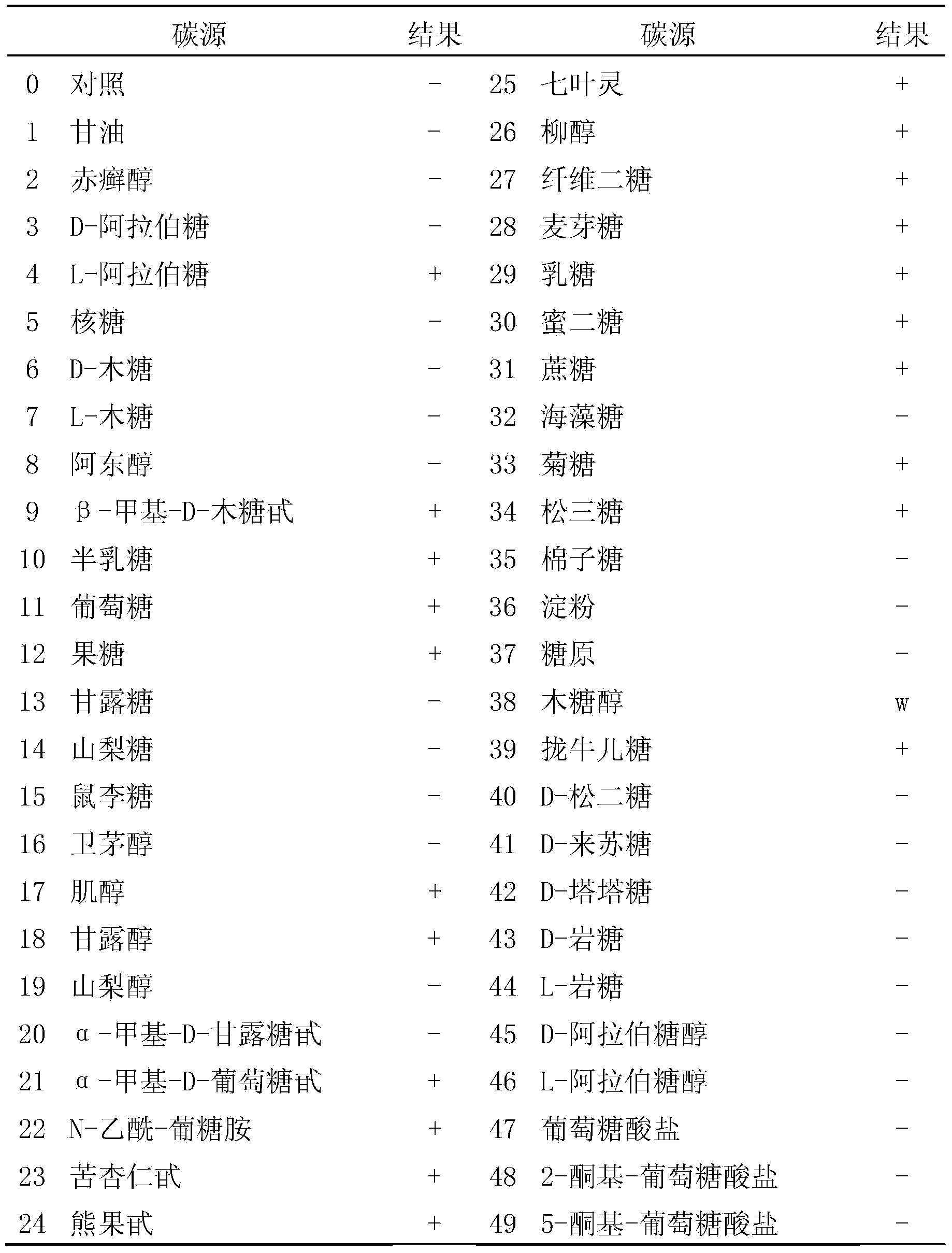Lactobacillus plantarum and application thereof to alfalfa silage
A technology of Lactobacillus plantarum and alfalfa, which is applied in the direction of application, microbial-based methods, animal feed raw material preservation methods, etc., can solve problems such as low soluble sugar content, excessive respiration, heat and exudate, poor stability, etc., to achieve Improve the content of crude fat and crude protein, good antibacterial activity, reduce the effect of fiber content
- Summary
- Abstract
- Description
- Claims
- Application Information
AI Technical Summary
Problems solved by technology
Method used
Image
Examples
Embodiment 1
[0020] Embodiment 1, the acquisition of Lactobacillus plantarum
[0021] 1. Separation and purification
[0022] Lactic acid bacteria ZZU 208 was isolated and purified from corn (variety: Zheng Chaotian No. 2) silage, which is a homofermentative lactic acid bacteria. The details are as follows:
[0023] Weigh 10g of corn silage product samples and add them into 90ml of sterilized distilled water, use a vortex shaker to shake for 30s, 10-fold gradient dilution, and then take 10 -1 、10 -3 and 10 -5 Spread the 2-fold sample dilution on the MRS solid medium, place it in an anaerobic incubator and cultivate it for 48 hours, then take it out, pick a single colony growing on the MRS according to the size, shape and color of the colony, and perform catalase Experiments and Gram staining. Catalase-negative and Gram-positive were tentatively identified as lactic acid bacteria, and streaked and purified twice on MRS solid medium. Stored at -80°C in 10% dimethyl sulfoxide Nutrient br...
Embodiment 2
[0041] Embodiment 2, the application of lactic acid bacteria ZZU 208 in antibacterial
[0042] Lactic acid bacteria ZZU 208 was inoculated into MRS liquid medium and cultured at 30°C for 48 hours. The obtained fermentation broth was centrifuged at 10,000 rpm for 5 minutes to collect the supernatant, which was tested for antibacterial activity by the Oxford cup double-layer plate method. The result was that the strain ZZU 208 The fermentation supernatant had strong antibacterial activity against Gram-positive and negative indicator bacteria, as shown in Table 3.
[0043] Antibacterial activity of table 3 bacterial strain ZZU 208 fermentation supernatant
[0044]
[0045]
[0046] Note: The antibacterial activity is expressed by the diameter of the antibacterial zone, and the outer diameter of the Oxford cup is 7.80mm. +, diameter of inhibition zone: 8.00-12.00mm; ++, 12.00-16.00mm; +++, 16.00-20.00mm; ++++, >20.00mm
[0047] The fermentation supernatant still had strong a...
Embodiment 3
[0058] Embodiment 3, the application of ZZU 208 in silage
[0059] 1. Preparation of bacterial suspension
[0060] Lactobacillus ZZU 208 was inoculated into MRS liquid medium, cultured at 30°C for 48 hours, and the culture solution was collected; or the Lactobacillus plantarum was cultured in an anaerobic incubator at 30°C on MRS solid medium for 48 hours, and a single colony was collected and cultured and resuspended in water. Prepare bacterial suspension (≥10 8 cfu / ml).
[0061] 2. Application of ZZU 208 in silage
[0062] Add the above-mentioned ZZU 208 bacterial suspension to alfalfa WL343 or alfalfa benchmark, the ratio of strain to alfalfa is 10 7 -10 8 cfu / 100g (specifically use 10 7 cfu / 100g), put in silage bags, vacuumize, and carry out silage at room temperature (25° C.) to obtain alfalfa WL343 silage products and alfalfa benchmark silage products respectively.
[0063] The results of microbial content (cfu / g FM) and pH changes during the silage process are sho...
PUM
| Property | Measurement | Unit |
|---|---|---|
| diameter | aaaaa | aaaaa |
Abstract
Description
Claims
Application Information
 Login to View More
Login to View More - R&D
- Intellectual Property
- Life Sciences
- Materials
- Tech Scout
- Unparalleled Data Quality
- Higher Quality Content
- 60% Fewer Hallucinations
Browse by: Latest US Patents, China's latest patents, Technical Efficacy Thesaurus, Application Domain, Technology Topic, Popular Technical Reports.
© 2025 PatSnap. All rights reserved.Legal|Privacy policy|Modern Slavery Act Transparency Statement|Sitemap|About US| Contact US: help@patsnap.com



